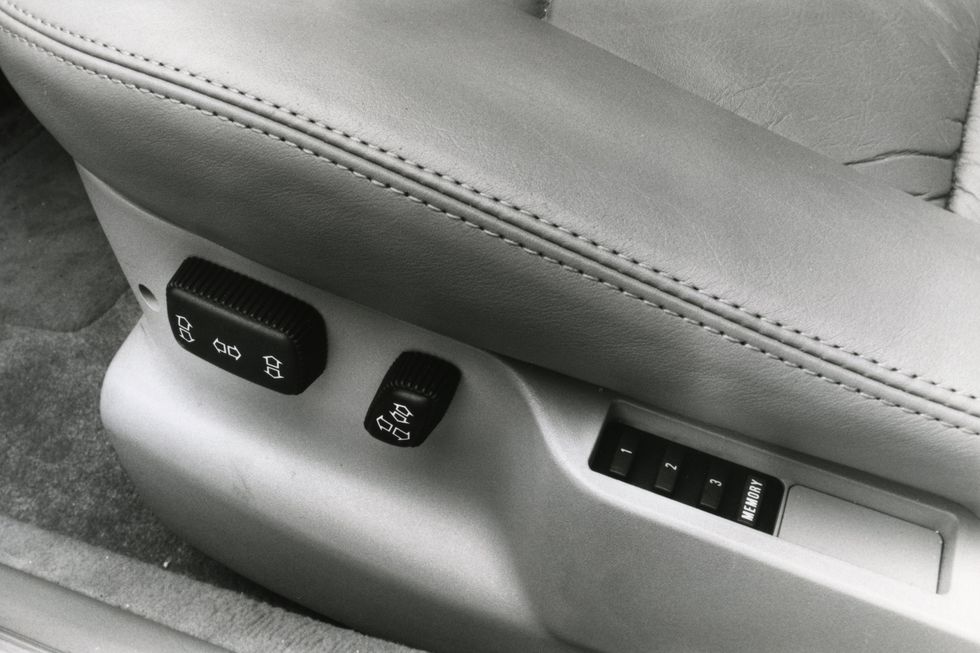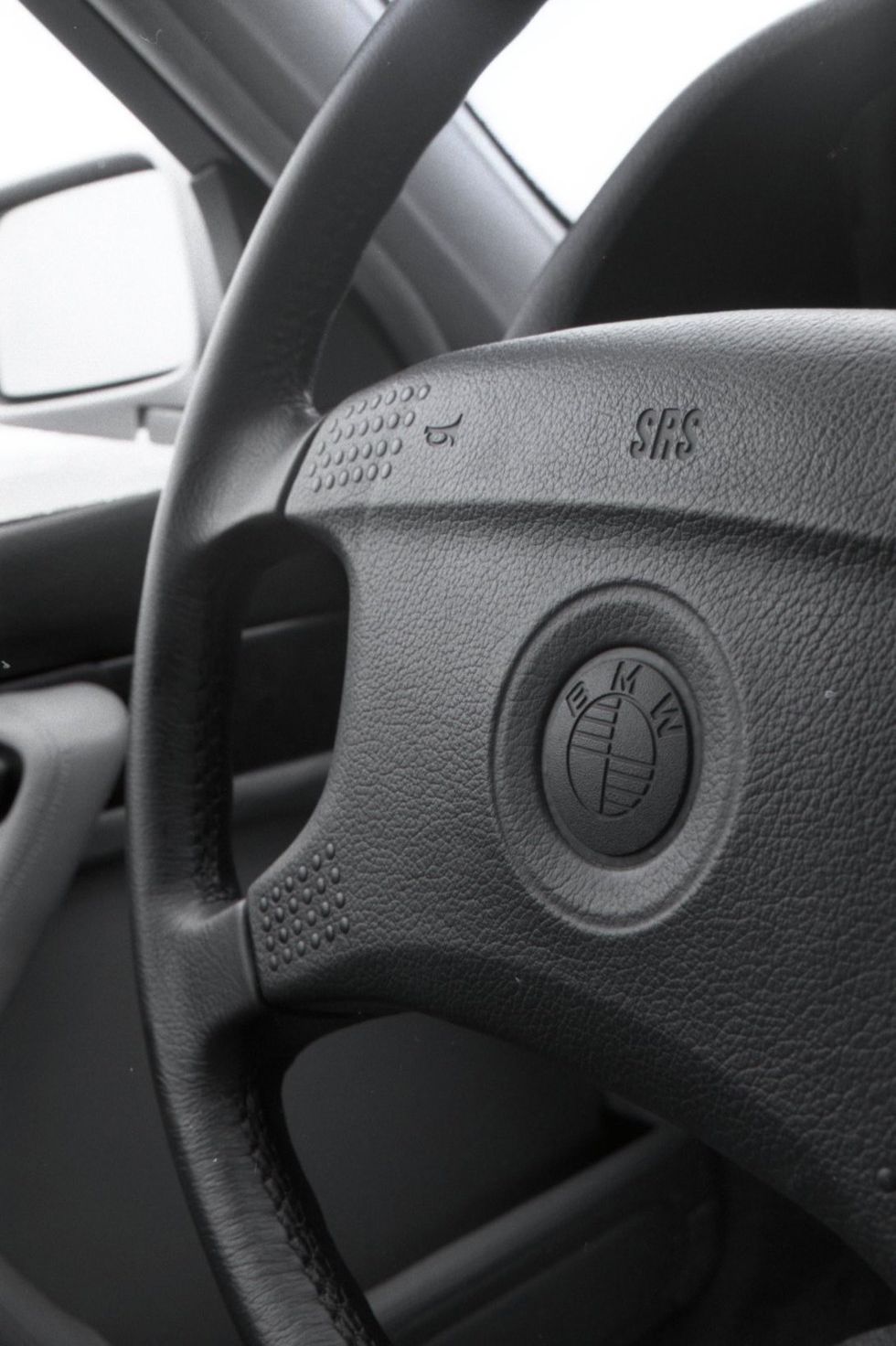1988 BMW 750iL: An Automobile for the Ages

From the April 1988 issue of Car and Driver.
Why would anyone pay $70,000 for a sedan? If you want to attract the opposite sex, your money would be better spent on an exotic sports car from northern Italy. If you want to project your wealth and importance to the populace at large, a limousine is the way to go. Even if you can afford an exotic, a limo, and any other car you want, why spend the price of a small house on a sedan? After all, you can buy any of several truly wonderful sedans for no more than 30 or 40 grand.
BMW provides the answer in the form of its new 750iL. Does more top end than a Porsche 911 Turbo appeal to you? How about quicker acceleration than a Mazda RX-7 Turbo? If speed isn’t your top priority, maybe you’ll be impressed to learn that the 750iL is one of the quietest cars we’ve ever tested. And its cabin offers luxurious furnishings and limousine-like space in a package that is ten inches shorter than a Mercedes-Benz 560SEL. Yes, BMW’s new flagship is expensive, but this is one case where you get what you pay for: a portfolio of strengths that no other sedan in the world can match.
As its designation suggests, the 750iL is related to the second-generation 735i, introduced here last year. The 735, with an aerodynamically efficient new body that looks simultaneously elegant and muscular, a spacious interior, solid-as-the-Alps construction, and an excellent blend of smooth ride and agile handling, is a sedan that any carmaker would be proud to call its own. The magicians of Munich, however, had even higher aspirations for the 7-series. They wanted a car that could claim the title of World’s Best Sedan.
More Archive Luxury Sedan Reviews
The essential ingredient of the potion that transforms 735i into 750iL is BMW’s new M70 V-12 engine. BMW’s engine wizards combined a generous displacement of 5.0 liters with the extravagance of twelve cylinders because they wanted an engine that not only produced seemingly unlimited power but, equally important, did so without apparent effort. A twelve-cylinder produces a smoother power flow than a six of the same displacement because its cylinders fire twice as often and with half as much intensity. (A twelve is not necessarily better balanced; a well-designed in-line six, such as the 735’s 3.5- liter, can be balanced just as well.) The inherent smoothness of a twelve minimizes the noise and vibration transmitted through a car’s driveline; and in BMW’s view, this benefit outshone the size, weight, and cost advantages of simpler engine designs. The engineers further enhanced the quietness of the 750’s driveline by fitting rubber mounts to the M70’s two interwoven intake manifolds, installing an insulating cover over its twelve clicking electronic fuel injectors, and fitting hydraulic valve-lash adjusters to its single-overhead-cam valvetrain.
Twelve-cylinder engines not only operate smoothly but also generate power eagerly. The reason is that they have so many valves. Even with only two per cylinder, the M70 has a total of 24 valves—50 percent more than a conventional V-8, or as many as a four-valve-per-cylinder six. (The total number of valves is more important to an engine’s breathing than their arrangement.) In addition, twelves are unusually responsive: their flywheel mass is minimal, and their small, lightweight reciprocating components are quick to accelerate.
To make the most of these advantages, the BMW V-12 is regulated by two Bosch Motronic electronic engine-control systems—one for each bank of six cylinders. Fitting two systems to the M70 was mostly a matter of expedience: Bosch does not make a twelve-cylinder version of its Motronic system. The arrangement does have one benefit, however: Because each system operates independently of the other, six cylinders will remain operational should one system fail.
Another unusual electronic feature of the M70 is its throttle linkage. When you press the accelerator pedal, a transducer signals the pedal position to a computer, which in turn controls electric motors that open the throttle butterflies the appropriate amount. The system interacts with the engine-control computers to synchronize the opening of the two throttles and provide an even progression of power. It also controls the idle speed.
The designers of the M70 did everything they could to minimize the weight and bulk disadvantages of the V-12 layout. Most significantly, they specified aluminum for all of the engine’s major components, resulting in a fully dressed weight of only 529 pounds—lighter than the all-aluminum Mercedes 5.6-liter and Porsche 5.0-liter V-8s. And though the new engine is wider than the 735i’s 3.5-liter six, it is not as long and fills the 750’s engine compartment nicely.
BMW says that its V-12 produces 300 hp at 5200 rpm and 332 lb ft of torque at 4100 rpm. However, it quotes the same figures for the European 750. Since European power figures are expressed in PS, or metric hp, instead of in English horsepower, the European figure should be 4 hp higher than the American number.
Whether the M70 engine produces merely 296 or a nice, round 300 hp, you may rest assured that there are enough horses under the hood to move the 4247-pound 750iL at full gallop. With its ZF four-speed automatic transmission set in the sport mode, which causes shifting to occur at the engine’s 5800-rpm redline, our 750iL test car accelerated from 0 to 60 mph in just 6.5 seconds and hit 100 mph less than ten seconds later. In the process it covered the quarter-mile in 14.8 seconds at 96 mph. Even at speeds well above 100 mph, the 750 never seems to run into the heavier air that eventually thwarts most cars’ acceleration. This BMW doesn’t stop accelerating until its speedometer needle reaches the 164 mark, which translates into a true 158 mph.
Dick Kelley|Car and Driver
Even more impressive than the V-12’s absolute power is its reserve of power at any rpm. Cruise down the highway at 65 mph, with a relaxed 2000 rpm showing on the tach, and a slight squeeze of the throttle is all that’s needed to produce a swell of acceleration. If you press hard enough to induce a downshift, the automatic provides a swift, seamless transition from gear to gear.
Such silky, broad-range power makes for an amazingly quiet ride. At a steady 70 mph, the interior sound level in the 750iL is a mere 67 dBA. The 750 is also remarkably quiet when running hard. Listen closely, though, and you can detect the sounds of finely honed machinery that we’ve always loved in BMWs.
Such quiet requires an environment-isolating suspension as well as a smooth engine. The 750’s underpinnings are identical to the 735’s: struts in the front, semi-trailing arms in the rear, and anti-roll bars at both ends. The shock and spring calibrations have been revised to cope with the 750’s heavier weight, and hydraulic load leveling has been added to the rear suspension, but the 735’s excellent ride-and-handling compromise survives intact. The suspension clearly communicates the condition of the road surface to the driver, but it transmits only information, filtering out the punishment. Even severely frost-heaved roads cause only a gentle jostling. And despite this isolation, the suspension keeps the 750’s body motions under tight control. This car wouldn’t float if you took a wrong turn onto a roller coaster.
The 750 also stays firmly planted when the road twists and turns. With 0.78 g of grip at its disposal and admirably neutral handling, the big Bimmer is remarkably agile. At its limit, the 750 stays just on the understeer side of neutral; however, a slight lift of the accelerator or a twist of the steering wheel can make the tail step out in precise increments. And when you find yourself entering a turn too fast, the 750’s thicker brake rotors and standard antilock control are ready to scrub off speed instantly. No matter how you drive this car, you never feel as if you’re piloting a two-ton quasi-limousine.
The only weak link in the 750’s dynamic controls is its ZF Servotronic variable-assist power steering, which it shares with the 735. The system is decidedly dead on center, which prevents an inadvertent twitch of the wheel from turning into a 150-mph mistake; call it autobahn sneeze protection. The unfortunate side effect of this prescription is that the 750 is unresponsive to the tiny, subconscious steering corrections that a sensitive driver makes constantly; as a result, compensating for wind gusts requires more attention than it should. In addition, the ZF system’s resistance increases with speed too obviously, and the steering feel tightens up unnaturally in high-speed bends. The conventional power-steering systems in other BMWs work much better.

Dick Kelley|Car and Driver
Another shortcoming of the 750 is its climate-control system. Although BMW bills it as an automatic system, the fan speed must be set manually. More important, the blower is loud even at its low settings. Our test car also suffered from an incessantly whirring servomotor. BMW says it has solved the latter problem, but the entire system could use more work.
Some might also find fault with the 750’s resemblance to the 735—though most of us were happy with its styling. The 750’s only exterior distinctions are a wider version of the BMW dual-kidney grille, a hood recontoured to match, aluminum wheels of different design, square exhaust pipes, and a 4.5-inch extension spliced into the rear-seat area—which accounts for the car’s “L” suffix. The additional length gives the 750 enough legroom for four NBA All-Stars.
The 750 enjoys several other interior upgrades over the already lavish 735i. Leather upholstery covers not only its seats but most of the dash and the door panels. The front seats are heated, and the split rear seat has individual fore-and-aft adjustments, which also vary the seatback angles. The outside rear positions have motorized headrests that automatically rise from their retracted positions when the corresponding seatbelts are fastened.

Dick Kelley|Car and Driver
The result is a cozy and functional driving environment. It’s easy to get comfortable in the highly adjustable and well-shaped front seats. The instrument and control layouts are excellent, and the stitches in the leather upholstery are aligned with military precision. The standard-equipment cellular telephone—if you can afford this car, you probably call your broker frequently—is designed for hands-free operation.
Whether all of these attributes make the 750iL worth its $67,000 base price depends very much on one’s net worth. Most people can’t imagine spending so much money on a car. The 750, however, is far from being the most expensive car in its class: the Mercedes 560SEL costs 70 grand, and the Bentley Eight costs almost a hundred. And at current exchange rates, the big BMW is actually cheaper here than it is in Germany. If you can afford the 750iL and like what it can do, you might even consider it a bargain.
We like what it can do. The 750iL may not turn heads like a Lambo or a limo, but its combination of speed, agility, comfort, and luxury beats its sedan competition by a huge margin. If money were no problem, this is the car that the majority of our staff members would select over any other sedan, at any price.
Counterpoint
A shocking number of us who have driven this car have been reduced to a state of helpless adoration akin to that of Emil Jannings in the movie The Blue Angel. Jannings, you may recall, played the old professor who wound up doing rooster imitations at the cabaret just so Marlene Dietrich would continue speaking to him.
With its 750iL, BMW has hatched something to crow about, a cruiser so good that even important Volk at Mercedes-Benz agree that it’s a fine car. In a country where bragging rights to the best big sedan are so important, that’s going somewhere. Which is exactly what the 750iL does—in a fine, silent style made up of equal parts hypnotism and seduction. The car does everything that reason can demand from a European long runner.
At nearly $70,000, it should do that, of course, but I—for one—just didn’t expect it to do it so well. The power’s there, the handling’s there, the statement’s there. No other large sedan in recent memory has offered so much in such a smoothly done package.
Cock-a-doodle-doo. —William Jeanes
After driving the BMW 750iL for barely half an hour, I found I had engaged myself in debate. Seventy thousand dollars is a hell of a lot of money, I argued. But, I countered, the 750iL is a hell of a lot of car. Not all of its virtues are immediately apparent. Only a variety of roads will bring out the full range of its talents. And those virtues and talents combine to form a whole that is much greater than the sum of its parts. But, I wondered, is it really worth $70,000?
The debate undecided, I set out on a quest. I wanted to see if I could find a road that the 750 couldn’t handle, a road that would demonstrate the limits of its refinement, a road that would introduce a single doubt into the pleasure I was deriving from it. I failed. Whether accelerating hard out of 100-mph sweepers or threading through tight country-road turns, the 750 never faltered. It remained unbelievably quiet and composed, and its wonderfully smooth and elastic engine never hinted at straining.
Maybe $70,000 isn’t so much money after all. —Nicholas Bissoon-Dath
I keep hearing the song sung by West Virginian Kathy Mattea—”You’re the Power”—who could be singing to this West German supersedan:
Like a blaze of gold
At the break of dawn
You’re the power that heals
My soul
When the wind grows cold
And I’m halfway gone
You’re the power that keeps
Me whole…
Driving the 750iL is therapeutic, yet it soothes your psyche without requiring you to take anything lying down. Put aside your annoyance at its price. Suspend, for the moment, any belief that the U.S.A. can build cars as well as anybody. The 750 has its small faults, but its talents overwhelm its idiosyncrasies. Despite its capacities for passengers and performance, the 750 gracefully goes, handles, and stops without effort, as if it were half its size. You feel its fluidity in its every move.
The 750iL is a manifestation of the human drive to do the by-God best we can. It is an automobile for the ages. —Larry Griffin
Arrow pointing downArrow pointing down
Specifications
Specifications
1988 BMW 750iL
Vehicle Type: front-engine, rear-wheel-drive, 5-passenger, 4-door sedan
PRICE
Base/As Tested: $67,540/$69,780
Options: limited-slip differential, $390; gas-guzzler tax, $1850.
ENGINE
SOHC V-12, aluminum block and heads, port fuel injection
Displacement: 304 in3, 4988 cm3
Power: 300 hp @ 5200 rpm
Torque: 332 lb-ft @ 4100 rpm
TRANSMISSION
4-speed automatic
CHASSIS
Suspension, F/R: struts/trailing arms
Brakes, F/R: 11.7-in vented disc/11.8-in vented disc
Tires: Pirelli P600B
225/60VR-15
DIMENSIONS
Wheelbase: 116.0 in
Length: 197.8 in
Width: 72.6 in
Height: 55.1 in
Passenger Volume, F/R: 54/51 ft3
Trunk Volume: 13 ft3
Curb Weight: 4247 lb
C/D TEST RESULTS
30 mph: 2.5 sec
60 mph: 6.5 sec
1/4-Mile: 14.8 sec @ 96 mph
Top Gear, 30–50 mph: 3.0 sec
Top Gear, 50–70 mph: 4.4 sec
Top Speed: 158 mph
Braking, 70–0 mph: 182 ft
Roadholding, 300-ft Skidpad: 0.78 g
C/D FUEL ECONOMY
Observed: 14 mpg
EPA FUEL ECONOMY
City/Highway: 12/17 mpg
C/D TESTING EXPLAINED

Contributing Editor
Csaba Csere joined Car and Driver in 1980 and never really left. After serving as Technical Editor and Director, he was Editor-in-Chief from 1993 until his retirement from active duty in 2008. He continues to dabble in automotive journalism and LeMons racing, as well as ministering to his 1965 Jaguar E-type, 2017 Porsche 911, and trio of motorcycles—when not skiing or hiking near his home in Colorado.



